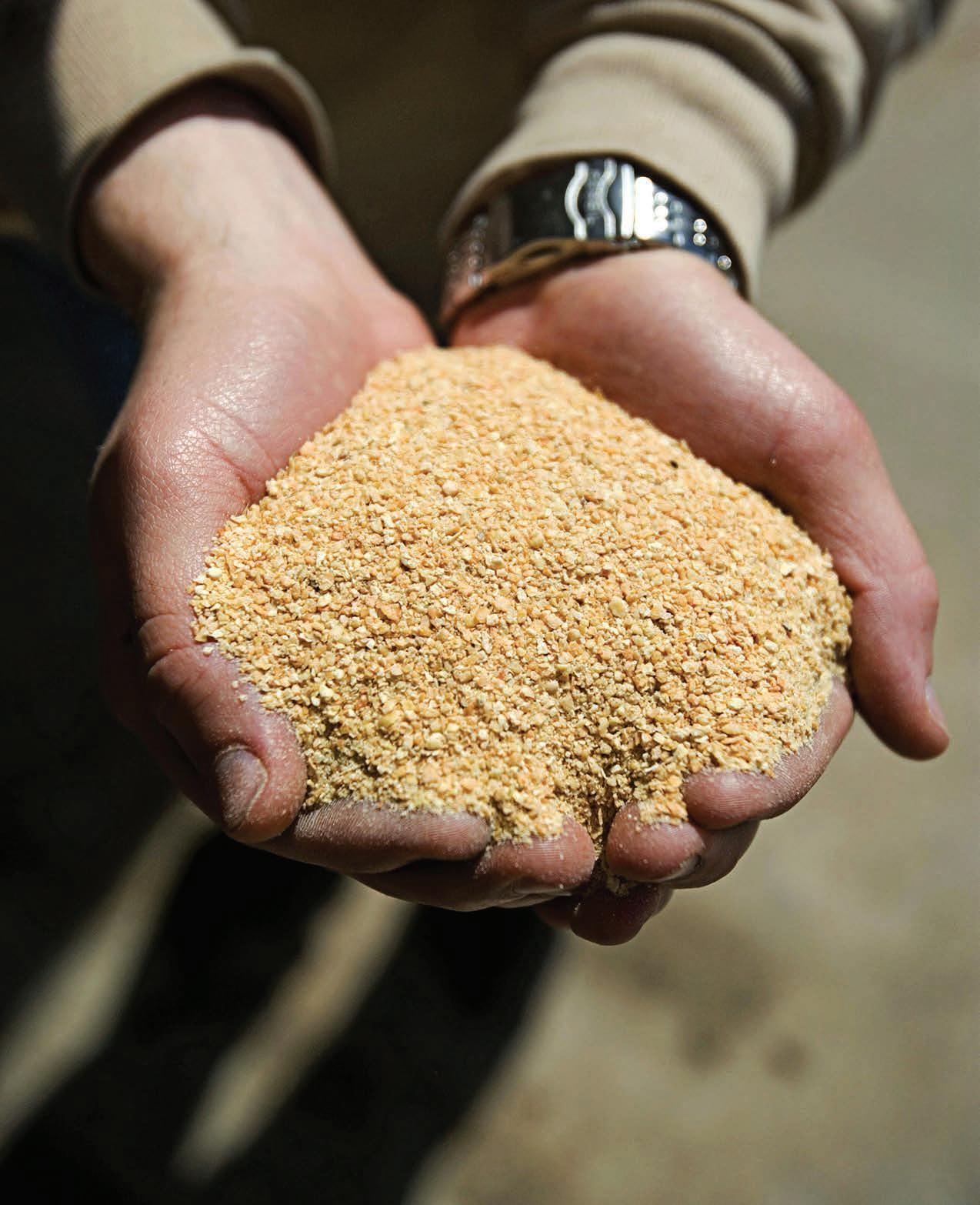











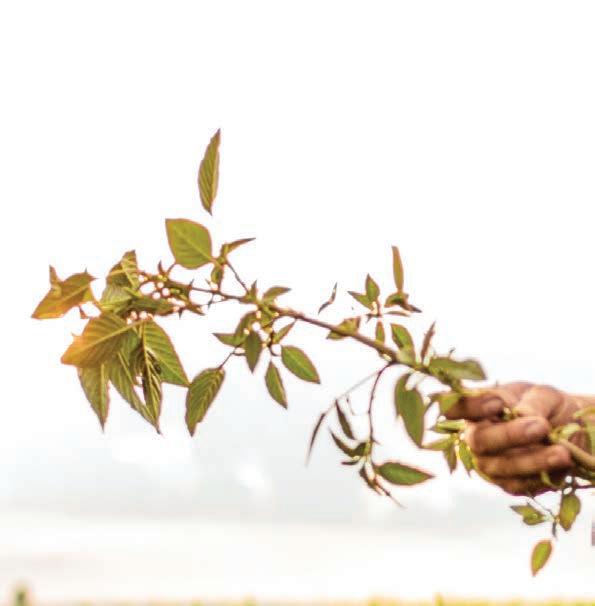

Whether it’s improving soybean meal to outperform the competition or promoting the sustainability of U.S. soy, the soy checkoff has been working behind the scenes to help farmers satisfy their customers’ needs. We’re looking inside the bean, beyond the bushel and around the world to keep preference for U.S. soy strong. And for U.S. soybean farmers like you, the impact is invaluable.
See more ways the soy checkoff is maximizing profit opportunities for farmers at unitedsoybean.org

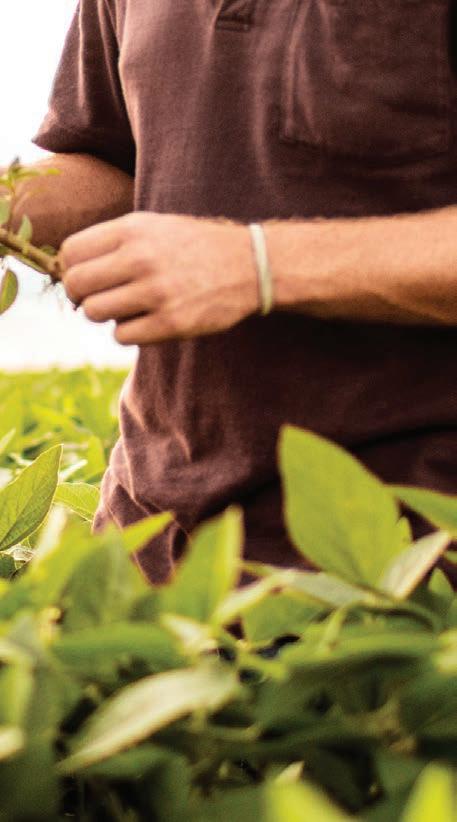
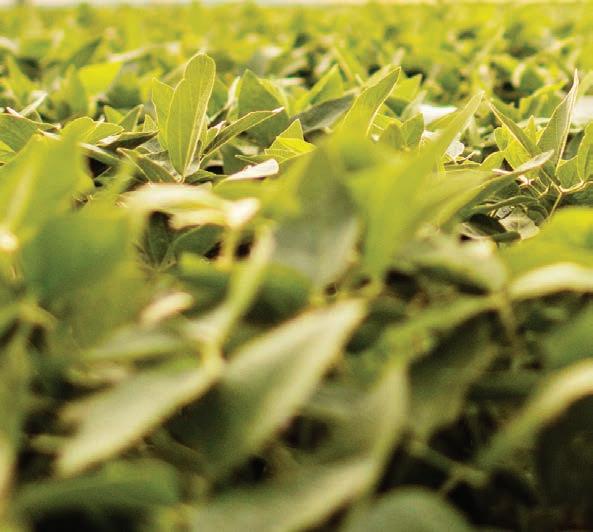


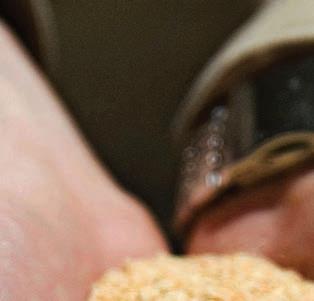
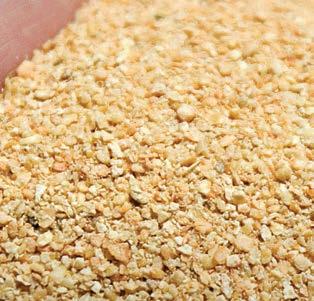

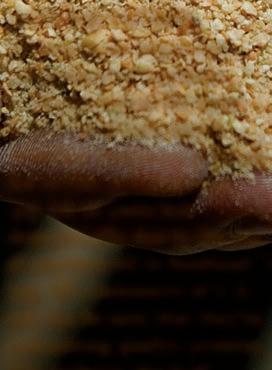

Protein is an important component of soybeans — 80 percent of the bean is processed into meal. Whether that meal is being fed to fish in Cambodia (pg. 14) or costs less domestically due to the use of soybean oil in biodiesel (pg. 10), customers of U.S. soy can be sure that they’re consuming quality protein. The soybean checkoff is investing in research to increase the protein content of U.S. soybeans while maintaining, or even increasing, yield (pg. 18). This research will not only help U.S. soybean farmers remain competitive, but increase the protein in the food supply.


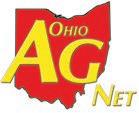



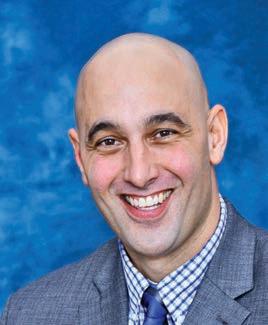
FRyan Rhoades
Ohio Soybean Association President Marion County soybean farmer
armers have been stepping up to the plate to address water quality concerns for many years. We have funded millions of dollars in research, we have changed the way we farm, and we have been at the table with legislators, researchers, and environmentalists to help chart a successful path forward for Lake Erie.
e Ohio Soybean Association and our fellow farm groups will continue telling that story, but we also know that actions will always speak louder than words. In February, eight meetings were held in the targeted 14 county area of the Maumee River Watershed to inform farmers about the newly created H2Ohio program. is program will provide support to farmers to implement new conservation practices to protect water quality, and over 1,500 farmers and agribusiness representatives attended the rst three meetings alone. at is what momentum looks like and we know it will continue to grow.
In addition to learning about how to apply for the H2Ohio program, attendees heard from leaders of the Ohio Agricultural Conservation Initiative (OACI) about that group’s Farmer Certi cation program open to all farmers whether they participate in H2Ohio or not. OACI is an unprecedented coalition of agricultural, environmental, and university organizations.
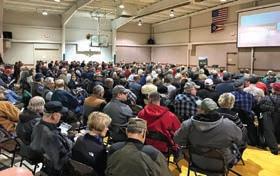
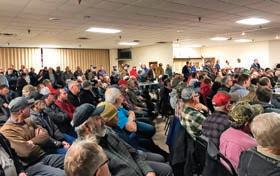
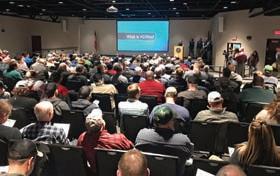
Together we can make H2Ohio and OACI Farmer Certi cation successful and show our fellow Ohioans that farmers have been and will continue to do everything we can to protect Lake Erie and the future of agriculture in this state.

Ryan Rhoades OSA President Marion County
President
Ryan Rhoades, Marion County
First Vice President
Patrick Knou , Shelby County
Vice President
Jennifer Wilson-Oechsle, Van Wert County
Treasurer
Je McKanna, Hancock County
Secretary
Rusty Goebel, Williams County
Chairman
Scott Metzger, Ross County
Trustees
Jerry Bambauer, Auglaize County
Trish Cunningham, Knox County
Bret Davis, Delaware County
Caitlyn Heimerl, Industry A liate Ex-O cio
Je Magyar, Ashtabula County
Derek Reusser, Holmes County
Andy Stickel, Wood County
Kerrick Wilson, Preble County
American Soybean Association
Board Representatives
Jerry Bambauer
Bret Davis
Scott Metzger
Sta Credits
Kirk Merritt - Publisher
Jennifer Coleman - Editor
Julia Brown - Contributing Editor/Sta Writer
Brent Warren - Art Director
Barry Falkner - Photo Quality/Proofer
Tony Green - Advertising Production
Ohio Soybean news is published six times a year by the Ohio Soybean Association, 918 Proprietors Rd., Suite A, Worthington, OH 43085. Phone: 614-476-3100. For address corrections contact Ohio Soybean News at 918 Proprietors Rd., Suite A, Worthington, OH 43085.
Web address: www.soyohio.org E-mail: cdeboard@soyohio.org
Comments and statewide news articles should be sent to the above address. Advertising space reservation must be made by the rst of the month preceding publication. In consideration of the acceptance of advertisement, the agency and the advertiser must, in respect of the contents of the advertisement, indemnify and save the publisher harmless against any expense arising from claims or actions against the publisher because of the publication of the content of the advertisement.
For Advertising Sales Contact:
Matt Herman - (612) 812-5833
matt.herman@dtn.com


In January, the farmer board members of both the Ohio Soybean Association (OSA) and Ohio Soybean Council (OSC) came together for their annual Joint Board Meeting. Both organizations, which serve different purposes in promoting and maintaining the soybean industry in Ohio, converge once a year to discuss the current issues facing the industry and brainstorm ways to navigate those challenges.
This year featured presentations that were focused on the future of soybeans in Ohio. First OSC’s own Barry McGraw spoke about the new Airable Research Lab, a checkoff-funded lab that will allow for more efficiency and innovation in the way that checkoff dollars are invested in new soybean products. McGraw explained that the lab will allow OSC to make more R&D projects internal and, therefore, make better use of checkoff dollars. The lab had a soft launch last year, but after getting its footing, is prepared to really take off in 2020.
Next up was Jordan Hoewischer, director of water quality and research at Ohio Farm Bureau, who presented on the new Ohio Agriculture Conservation Initiative (OACI) and how that will play into H2Ohio (see pages 20-21). Hoeswicher demonstrated the OACI certification program and explained that in order to receive H2Ohio funding, farmers will have to enroll in the H2Ohio program, with the rollout of the program beginning in the Maumee River Watershed. OSA supported the legislation that created H2Ohio and OSC is a member of OACI, demonstrating how the two groups work together on opposite sides of an issue to accomplish their goal of supporting Ohio soybean farmers.
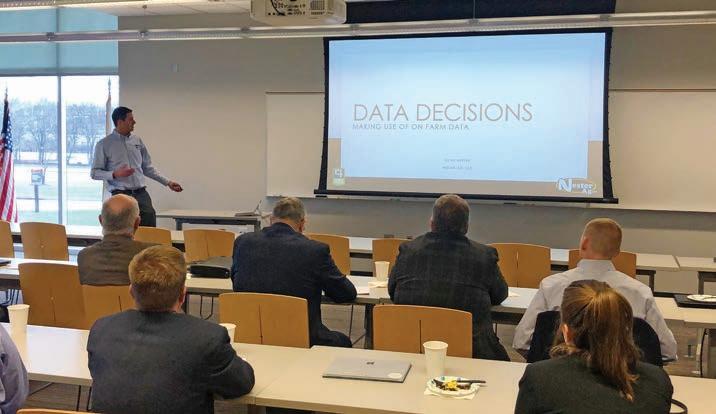
The morning concluded with a presentation by Clint Nester of Nester Ag, an agricultural consulting business in Northwest Ohio that focuses on nutrient efficiency and recoverability. Nester covered the history of precision ag technology and where the industry will be moving in the next few years, including talking about the more manageable technologies, like drones, and the more far-fetched, like autonomous tractors. He mentioned that while the technology for driverless tractors exists, the actual implementation of that technology is still several years away for most farmers, especially as governments catch up with the regulation of autonomous vehicles. A recording of his talk will be available on PrecisionAgReviews.com
After lunch, the leaders of both boards gave brief updates about the accomplishments of the past year and what both organizations hope to accomplish in 2020. For OSC Chairman Bill Bateson (Hancock County), 2019’s successes included an 11th R&D 100 award, completion of the Tri-State Fertilizer Recommendations, and OSC’s
Clint Nester of Nester Ag presents to both OSC and OSA boards about the future of ag technology at the Joint Board Meeting in January. e annual meeting brings both checko and policy boards together to strategize for the upcoming year.
participation in several international trade-related conferences and trade team visits. In 2020 the checkoff plans to continue momentum on plant and product research, build and grow new markets, and develop a new three-year strategic plan to begin in 2020.
OSA President Ryan Rhoades (Marion County) also touched on his organization’s achievements of 2019, including meeting with over 50 legislators and legislative staff, supporting H2Ohio legislation and the passage of USMCA. In 2020, OSA plans to monitor possible long term water quality legislation, advocate for final resolution to trade issues, and advocate for more biodiesel and bioproduct use at federal and state levels, including a possible Ohio biodiesel incentive. u


For the past 18 months, trade has been the primary issue on everyone’s agenda. Soybean growers across the country have waited for a resolution to restore exports hit hard by retaliatory tariffs. As we neared the end of 2019, it appeared we would be closing out another year without tangible progress restoring our largest soybean market and maintaining important others. But finally, we saw glimmers of light at the end of the trade tunnel. On Dec. 13, China and the U.S. reached an initial deal to begin resolving the exhausting trade war between the two countries. The following week, on Dec. 19, the House of Representatives approved the United States-Mexico-Canada Agreement (USMCA) with an overwhelming 38541 vote and sent it to the Senate.
Fast forward to January 2020: USMCA was ratified with unprecedented bipartisan support, and the China Phase 1 deal signed by President Trump is hopefully starting to de-escalate tensions between the U.S. and soy’s largest marketplace. Soy growers from across the country, along with other agricultural groups and business leaders, worked closely with the administration and Members of Congress to advocate for these trade victories and will continue to do so as progress is made with China and other important U.S. trading partners.
On Jan. 15, American Soybean Association (ASA) President Bill Gordon of Worthington, Minnesota, was present in the East Room of the White House to witness President Trump and China's Vice Premier Liu He sign the U.S.-China Phase 1 trade deal. The soybean industry applauded the deal and has viewed this step as a sign of considerable strides with China. While the first phase does not rescind retaliatory tariffs imposed by the countries, ASA is hopeful the agreement will lead to additional measures that
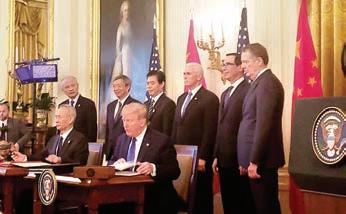
President Trump signed the Phase 1 trade deal in January, which will hopefully lead to a de-escalation of the trade war with China.
restore open trade between the two countries, including a negotiated solution in the next phase that does remove tariffs on American soybeans shipped to China. Changes outlined in the Phase 1 deal are encouraging: Increased agriculture purchases; a more predictable, efficient, science- and risk-based regulatory process for evaluation and authorization of agricultural biotechnology products; improvements to sanitary and phytosanitary measures; and intellectual property protection for agriculture, among other industries.
According to documents released by the White House outlining details of the deal, China’s promised purchases will include U.S. agricultural products, “such as soybeans, cotton, grains, meats, ethanol, seafood, and the full range of other agricultural products,” and will total at least $80 billion over the next two years. We do not know what portion of those dollars will be for soybean purchases, but this is a promising commitment.
While the de-escalation of tensions between the two countries bodes well for future negotiations, soybean leaders still have a lingering unease regarding the 25% retaliatory tariffs on U.S. soybeans. ASA remains concerned that, without the formal removal of the tariff, it will be hard to ensure open market access with China into the future. ASA urges the U.S. and China to include full removal
of agriculture tariffs in the next-round agreements and will continue to follow the Phase 1 deal as it is implemented.
After 14 months of rallying for the, “new NAFTA,” soybean growers can rejoice that the United States-Mexico-Canada Agreement (USMCA) was signed into law by President Trump on Wednesday, Jan. 29. USMCA passed through both the House and the Senate with robust bipartisan support, starting 2020 off on an encouraging note for soybean growers across the country. ASA President Bill Gordon (MN) and board members Bret Davis (OH), Brad Doyle (AR), Daryl Cates (IL), and Brad Kremer (WI) joined leaders from
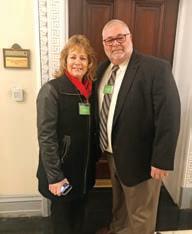
Ohio Corn and Wheat Growers Association President Patty Mann (Shelby County) and Ohio Soybean Association director Bret Davis (Delaware County) attended the USMCA signing.
other agriculture groups who attended the signing on behalf of their industries and who have supported USMCA as an opportunity for market certainty and continued growth.
Reliable access to export markets is critical for agriculture and the rural economy. The North American Free Trade Agreement (NAFTA) created one of the world’s largest free trade zones, laying the foundation for strong economic growth and rising prosperity in the United States, Canada and Mexico. Since the enactment of NAFTA, soy exports to Mexico quadrupled. Mexico is the No. 2 buyer of U.S. soybean meal ($579 million), the No. 2 buyer of U.S. soybean oil ($202 million), and the No. 2 market for U.S. whole beans ($1.5
billion). In addition, the enactment of NAFTA saw soy exports to Canada double. Canada is the No. 4 buyer of U.S. soybean meal ($317 million) and the No. 7 buyer of U.S. soybean oil ($26 million). Overall, Canada and Mexico represent the top two export destinations for almost all U.S. agriculture products, totaling roughly $39 billion in U.S. agriculture exports every year.
More than just securing exports, USMCA modernizes NAFTA by recognizing all forms of agricultural biotechnology to support 21st-century innovations in agriculture, including new gene editing technologies to support innovation and reduce trade distorting policies. This step is crucial for farmers as they look to the future and the ongoing redefining of modern biotechnology.
The United States' ratification follows Mexico, whose Senate passed the revised treaty on Dec. 12, 2019. Canada is the only country still to ratify USMCA, with business and industry groups wanting
the Trudeau government to ratify the trade pact as quickly as possible to alleviate economic uncertainty. Free trade is critical to the economies of Canada and Mexico, which both send around 75% of goods to the United States. Canada is expected to follow the U.S. and sign in the coming weeks.
While China and the USMCA got all the attention at the beginning of this year, on Jan. 1, 2020, the U.S.-Japan Trade Agreement (USJTA) went into effect, eliminating or reducing tariffs on certain agricultural and industrial products to enhance bilateral trade in a robust, stable, and mutually beneficial manner between the two nations. When the agreement is implemented by Japan, American farmers and ranchers will have the same advantage as TransPacific Partnership countries selling into the Japanese market. With a 63% market share, the United States is the
largest soybean supplier to Japan, with exports totaling $976 million in 2017.
The U.S. and Japan will continue consultations throughout this year in order to enter negotiations on a broader trade agreement than the one signed in October.
Soy growers continue to advocate for dissolution of the retaliatory tariffs with China, and ASA continues to look to expand existing markets and open new ones for U.S. soy. In February, United States Trade Representative Robert Lighthizer will travel to India ahead of President Trump’s planned visit to New Delhi to further negotiate the terms of a trade deal that would include New Delhi rolling back India’s high average tariff rate on agricultural goods. ASA is keeping an eye on this and other trade negotiations, including a U.S.-U.K. deal. u







The Ohio Soybean Council works closely with researchers at The Ohio State University to keep you on the leading edge of soybean farming. OSU Professor Mark Loux has spent more than three decades studying weeds to help our state’s farmers protect their yields. With costly weeds like marestail and giant and common ragweed emerging in the fall, Loux suggests a burndown strategy may be key to an effective herbicide program. suggests
Stay on the leading edge. See all the ways the Ohio Soybean Council and soybean checkoff work for you at OhioFieldLeader.com.



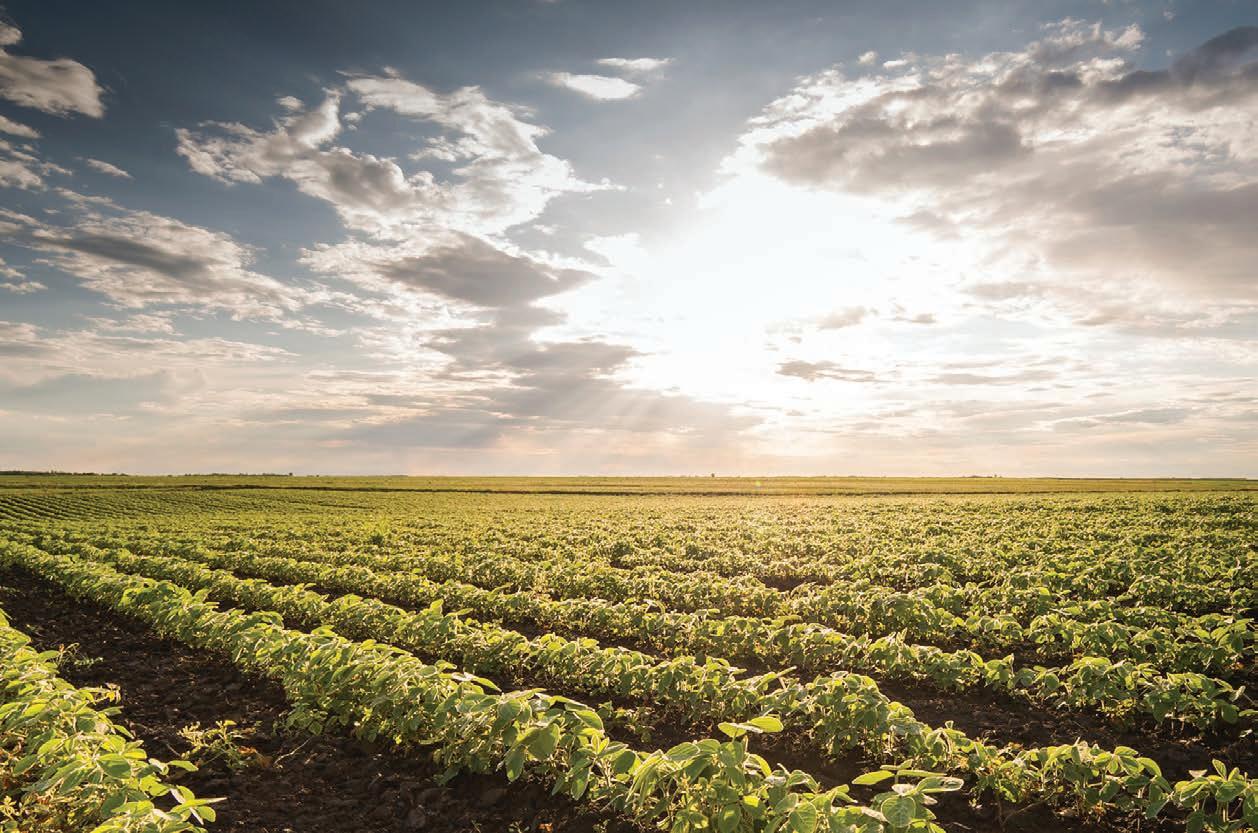






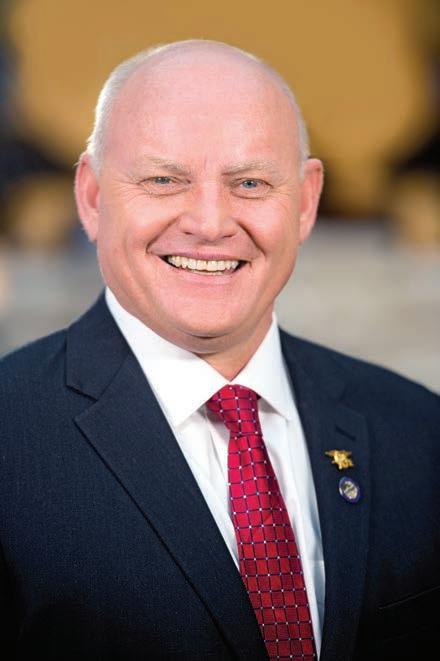
Senator Frank Hoagland is currently serving his first term in the Ohio Senate, representing southeastern Ohio, including the counties of Carroll, Jefferson, Harrison, Belmont, Noble, Monroe, Washington, Athens, Meigs and a portion of Vinton county. He is both a small business owner and a retired Navy SEAL. As a state senator, he looks forward to working on issues important to the people of his district, including jobs and economic development, education, veterans affairs and fighting the opiate epidemic in our state. Senator Hoagland serves as the chairman of the Senate Agriculture and Natural Resources Committee.
Q:
What inspired you to run for office?
A: I ran for office because I know that through my past experience, I have developed and applied the skills necessary to be a productive leader, one who would represent his district with integrity, honesty, and with a team oriented approach.
Q:
How did your previous jobs/ experiences prepare you to serve as a legislator?
A: My previous job taught me to face challenges head on, to lead by example, and to learn from and embrace both success and failure. I learned selflessness and that God’s gift of life is to be cherished.
Q:
What are the most important things you are currently hearing from constituents in your district?
A: We need to continue to focus on the education of our children and that proper education leads to a better community. Maintaining and expanding upon the economic momentum of the district is important to my constituents. It is necessary to continue with this positive progression to ensure a better future for the next generation.
Q: What do you think is the most important for readers to know about what is happening at the Ohio Legislature?
A: Ohio is putting the interests of its people first.
Q: What do you like most about working in the Ohio Legislature?
A: Being in a position to directly hear the needs of the people and working on
expanding the areas of capabilities for helping those in need.
Q: What advice would you give to someone who is looking to get more involved in state government?
A: In any situation, it is important to be open-minded and to listen to all sides before acting. Leaders must constantly develop their leadership skills in order to be effective in their role.
Q: What do you believe is the most pressing issue for soybean farmers right now? How do you plan to address it?
A: Soybean farmers need to continue to work on expanding the market for soybeans while also focusing on the success of young and future farmers. I plan to empower farmers to invest more into the younger generation of farmers through proper education and training.
Q: What can Ohioans expect from your bills this year?
A: Agriculture and education are the backbones of Ohio and I want to further the progress we’ve made on each of those and explore new ways to better serve the needs of Ohio. I am focusing on increasing the mobility and communications of our state. I also want to ensure that our veterans, first responders, and law enforcement are being taken care of.
Q: Are there any bills you’re working on or that you’ve already introduced this session that make you especially proud or excited?
A: Our bills are safeguarding children in schools, helping our state’s veterans, and creating a safer environment.
Q: Anything else you’d like to add? A: In God we Trust.



HERE’S HOW THE SOY CHECKOFF WORKS. The national soy checkoff was created as part of the 1990 Farm Bill. The Act & Order that created the soy checkoff requires that all soybean farmers pay into the soy checkoff at the first point of purchase. These funds are then used for promotion, research and education at both the state and national level.

Half goes to the state checkoff for investment in areas that are a priority for that state.


1/2 of 1% of the total selling price collected per the national soybean act & order


Half goes to the national checkoff for investment in USB’s long-range strategic plan.



By the National Biodiesel Board
The biodiesel and renewable diesel industry is starting 2020 with renewed confidence. In December 2019, Congress passed a multi-year extension of the biodiesel tax incentive, providing a significant and long-sought win — certainty and stability in the tax incentive.
A stable, long-term extension of this tax incentive has been a long-time goal of the industry. With the tax credit in place, U.S. biodiesel and renewable diesel production can grow substantially. In addition to retroactive eligibility for 2018 and 2019, biodiesel and renewable diesel producers can now count on the tax credit for 2020, 2021, and 2022. This three-year outlook is the longest time period the industry has been able to count on the credit since it was first introduced in 2005.
“The extension happened because our industry and membership worked harder, smarter, and more strategically than others," said National Biodiesel Board Vice President of Federal Affairs Kurt Kovarik. "Over the past two years, with the help of our biodiesel champions, we’ve developed a recipe for success in Washington.”
With plants and markets across the country, the U.S. biodiesel and renewable diesel industry supports more than 60,000 U.S. jobs, paying $2.5 billion in annual wages. The biodiesel tax incentive has supported growth of the U.S. market from a few hundred million gallons to more than 2.6 billion gallons annually. Producers rely on certainty in this policy to finance construction of additional capacity and maintain feedstock supply chains.
This renewed tax credit, and the certainty it provides, will also help
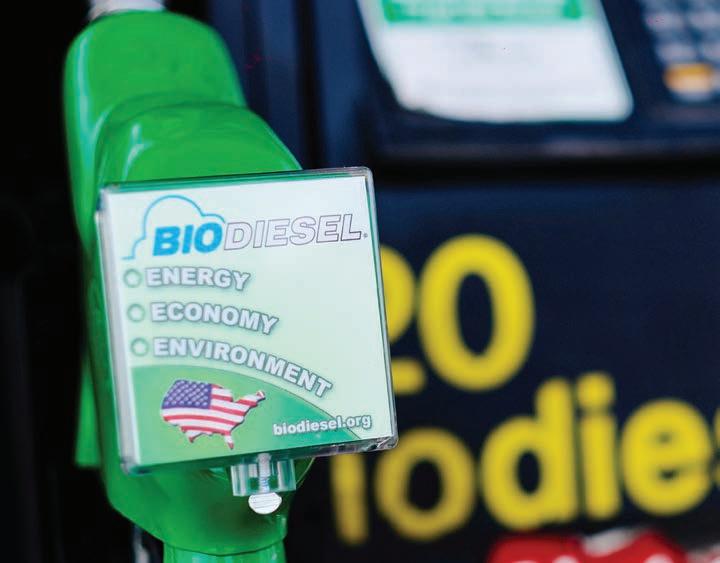
NBB meet its newly announced Vision for the industry's future:
Biodiesel, renewable diesel, and renewable jet fuel will be recognized as mainstream low-carbon fuel options with superior performance and emission characteristics. In on road, off road, air transportation, electricity generation, and home heating applications, use will exceed six billion gallons by 2030, eliminating over 35 million metric tons of CO2 equivalent greenhouse gas emissions annually. With advancements in feedstock, use will reach 15 billion gallons by 2050.
“In order to reach our six-billiongallon target, the industry will have to rely heavily on existing feedstocks,” said Alan Weber, senior economic advisor to NBB and soybean farmer in central Missouri.
Weber explained as protein demand grows globally, there will be excess soybean oil supplies.
“As global demand for protein rises, the world will see a rise in available vegetable oils," said Weber. "That rise will far outpace our needs from a human diet perspective, leaving available oil for biodiesel production and leaving nothing to waste.”
The biodiesel and renewable diesel industries currently utilize more than 8 billion pounds of soybean oil, or the oil from 25-35 percent of domestic soybean crush, supporting a vital component of the value chain. This demand for soybean oil contributes on average 13 percent of the cash price to a bushel of soybeans according to INTL FCStone. The reinstatement of the tax incentive will provide muchneeded market stability in the near term enabling continued growth of the biodiesel industry moving forward. u
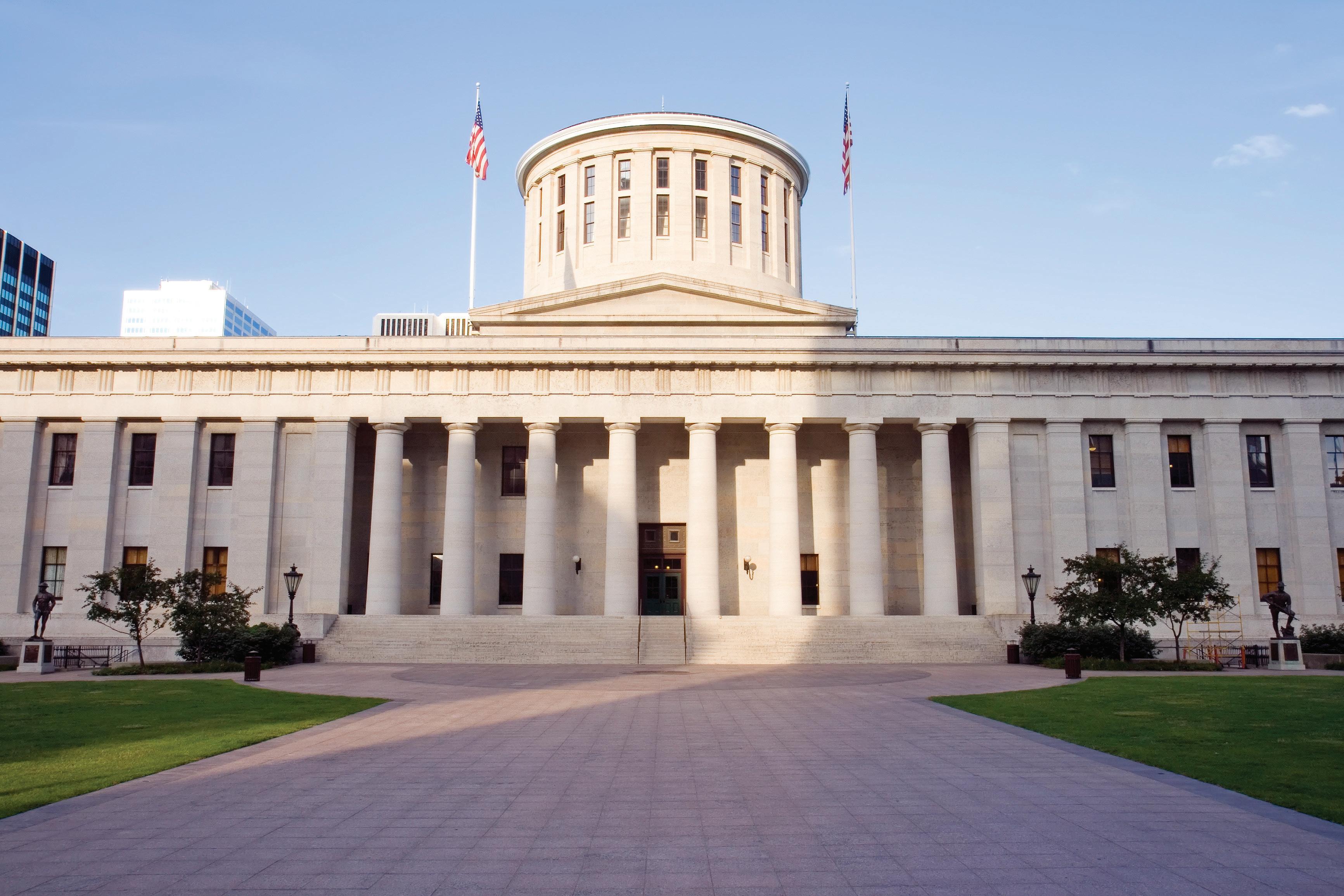


What began on an Indiana soybean farm 100 years ago developed into an organization that quickly grew to be the leading advocate for soybean farmers and foster the building of the U.S. soybean industry — the American Soybean Association (ASA). ASA is celebrating its “First Soy Century” as it recognizes its 100th anniversary throughout 2020.
The roots of ASA were formed when brothers Taylor, Noah and Finis Fouts hosted the first Corn Belt Soybean Field Day at their Soyland Farms operation in Camden, Indiana, on Sept. 3, 1920. The event drew nearly 1,000 farmers from six states, who were interested in discovering more about this emerging new commodity called soybeans.
The National Soybean Growers’ Association — later renamed the American Soybean Association — was formed that very day. Taylor Fouts was elected as the first president of the association.
In the century since those humble beginnings on an Indiana soybean farm, ASA has continually been on the leading edge — focused on sustaining and improving the prospects and opportunities for profitability for U.S. soybean farmers.
Throughout the years, ASA has been at the forefront — engaged, committed and working diligently on behalf of U.S. soybean farmers on a variety of issues including:
Helping remove interstate commerce restrictions and protect domestic markets for U.S. soybeans and soy food products.
Leading the charge to improve soybean grading standards in order to meet the quality demands of domestic processors and international soybean buyers.
Working with USDA’s Foreign Agricultural Service decades ago to initiate market development projects for U.S. soy and soy products in what was just a few countries starting in the mid1950s, growing to more than 40 countries in the 1960s, and reaching today’s
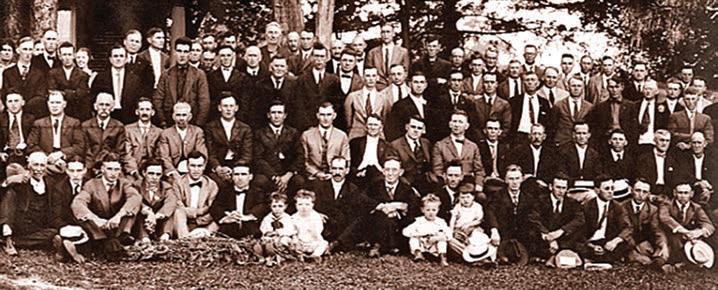
globally strong position of exporting U.S. soy to more than 100 countries.
Funding initial research that led to dozens of new uses for soy-based products — from paint to printer’s ink, from plastics to building materials.
Working with the soybean processing industry to improve the quality, characteristics and value of U.S.-grown soybeans.
Fostering the development, growth and engagement of state soybean associations — creating a powerful nationwide network of soybean advocates and farmer-leaders.
Creating a “voluntary” soybean farmer-investment program in 1948 that eventually led to the establishment of state soybean checkoff programs.
Advocating and achieving passage of legislation creating a national soybean checkoff — managed by the farmer-led, USDA-appointed United Soybean Board.
Ensuring that soybean farmers are heard — loud and clear — when key legislation is being developed and debated — from Farm Bills to renewable fuels, from regulatory issues to international trade.
And most importantly, representing the best interests of soybean farmers at every opportunity.
‘First Soy Century’
ASA plans a robust year of activities to celebrate the association’s centennial including:
A policy-focused event on July
Approximately 1,000 farmers and their families from Indiana, Illinois, Ohio, Michigan, Wisconsin and Kentucky attend the “First Corn Belt Soybean Field Day,” where the American Soybean Association was founded on Sept. 3, 1920, in Camden, Indiana.
8, 2020, at the National Museum of American History in Washington, D.C.
A dedication ceremony on Aug. 4, 2020, for an historical marker to be located on the Fouts family farm in Camden, Indiana, the site of ASA’s birth in 1920.
A forward-looking symposium titled “The Next Soy Century” to be held on the campus of Purdue University on Aug. 5, 2020, featuring an impressive line-up of thought leaders and industry experts.
A website dedicated to the 100th anniversary at ASA100Years.com.
A Land’s End web portal through which ASA-branded merchandise can be ordered. A link to this portal is available on the ASA 100th Anniversary website.
A commemorative book outlining the history and achievements of ASA over the past century.
Dozens of web videos featuring anecdotes and congratulatory messages from former ASA presidents, policy makers and soybean advocates.
A wrap-up celebration at the ASA board meeting in December 2020. u
For more information on the 100th anniversary of the American Soybean Association, visit ASA’s 100th Anniversary website at ASA100Years.com




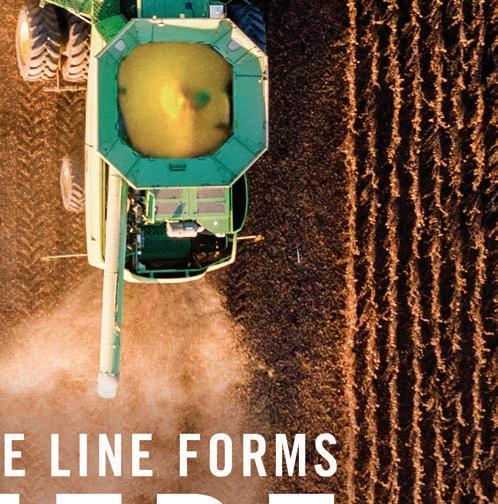






U.S. soybean growers delivered four key soy protein messages to current and potential customers in Cambodia and Myanmar where protein demand is rapidly growing for aquaculture and livestock feeds as well as human foods. e American Soybean Association’s World Initiative for Soy in Human Health’s (WISHH) Southeast Asia trade team also celebrated a milestone with a WISHH strategic partner by joining a ribbon cutting for Cambodia’s rst in-pond raceway aquaculture system, an important innovation for the sustainable intensi cation of sh production in the region.
U.S. Department of Agriculture (USDA) funds supported the travel for the 13 soybean leaders to have faceto-face discussions with WISHH’s many contacts in the human food and livestock feed industries. “We came to make personal connections with our current and future customers for U.S. soy. We hope by visiting Cambodia and Myanmar we have demonstrated how much we care about these emerging markets and our customers’ success using U.S. soy,” said WISHH Program Committee Chair Daryl Cates, an Illinois soybean grower.
“U.S. soy delivers quality protein to emerging markets whether their need is feeding their sh, chickens or pigs or they are seeking a nutritious and a ordable ingredient for human foods,” Cates added.
“First, we stressed that U.S. soy is high-quality protein. Second, we shared with these emerging market leaders that the United States is a reliable supplier of sustainable soy to meet their protein needs,” Cates said “ ird, we emphasized that U.S. soy is delivered in containers, bags and really however they want it. Finally, we reinforced the message to Cambodia and Myanmar’s food and feed
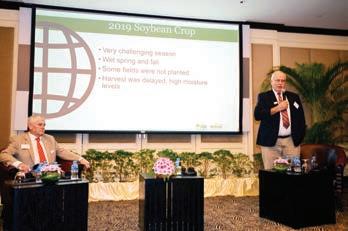
Clark County farmer Bob Suver presents about the 2019 growing season at a conference in Cambodia.
leaders that we will help them maximize the value of U.S. soy through WISHH’s multi-faceted technical assistance.”
WISHH’s Commercialization of Aquaculture for Sustainable Trade (CAST) is a USDA Food for Progress project designed to develop a lasting aquaculture industry in Cambodia. Cambodia’s GDP has increased by more than 7 percent per year since 2011, growing the demand for animal and aquaculture-sourced protein. e country’s aquaculture industry demand for soybean protein is projected to reach 100,000 metric tons per year by 2030.
In addition to Cates, WISHH Program Committee members on the trade team included WISHH Vice Chair Gerry Hayden (KY), WISHH Treasurer Jim Wilson (MI), Bob Haselwood (KS), Morey Hill (IA), Bob Suver (OH – Clark County) and United Soybean Board (USB) Ex-O cio Member David Williams (MI). ASA Director David Droste (IL) and USB Directors Mike McCranie and Bob Metz joined as well as Doug Winter who serves as a USB and U.S. Soybean Export Council (USSEC) Director. ASA and USSEC Director Stan Born also joined the team in Myanmar.
“Visiting Cambodia and Myanmar o ered us a great opportunity to share the story of U.S. Soy with international
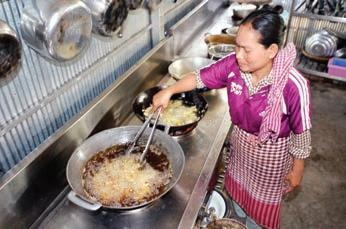
At a hatchery in Cambodia, sh that were fed soybean-based feed is fried in soybean oil.
buyers and make those personal connections that will make our soybeans top of mind when it comes time to buy,” Suver said.
e trade team also included representatives of six U.S. soybean exporting companies to directly share information about U.S. food grade soybeans and how U.S. soy is available in containers.
While in Southeast Asia, the WISHH trade team also traveled to Myanmar. WISHH is leading USDA-funded activities to grow Myanmar’s human food market, and the USSEC is active in the animal feed and aquaculture sectors.
ASA/WISHH connects trade and development across global market systems, improving food security. Knowing that protein plays an essential role in human nutrition, visionary U.S. soybean growers founded WISHH in 2000 to serve as a catalyst in emerging markets. WISHH brings the power of strategic partnerships to our unique market-systems approach. Local business leaders, governmental and non-governmental organizations as well as academic institutions join us in increasing demand and fueling economic growth for the sustained availability of nutritious and a ordable human foods and livestock feeds. u


You might not want to think about it, but in the event the precision ag product you invested in gets damaged or ruined, would it be covered under your insurance?
Don’t assume your equipment is covered on a broad or blanket insurance policy because it probably isn’t.
Plan a visit with your insurance agent to be sure, but it’s likely that you need to schedule your precision equipment on your policy using what is called a special form to be sure you’re protected against all the perils you’ve considered and some you probably haven’t even thought of. If your agency doesn’t offer special coverage on farm personal property, it can be scheduled on an inland marine policy to get more extensive allencompassing coverage.
“Don’t just assume that because you have insurance on your property, whether on your farm policy or your personal policy, that you’re going to have coverage on all your precision stuff,” Michael Vallery, of Vallery & Dorn Insurance, said. “Have a discussion with your insurance agent and ask, ‘How should I cover this on my policy to make sure that I’m not going to be disappointed when something bad happens?’ ”
According to Vallery, farmers using precision ag equipment and technologies should be considering their insurance and revisiting this issue annually. Farmers will often purchase new equipment without thinking of transferring the addition onto their policy because they are so excited about the new opportunities for information or efficiencies.
A best practice is to keep a list of equipment, its make and model, and corresponding serial numbers to share with your agent during that annual meeting. Each of these needs to be listed on a special form to guarantee protection.
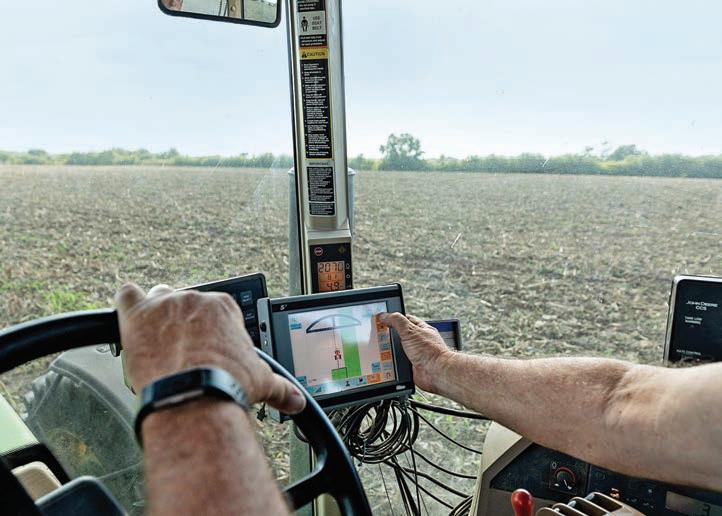
“Having your equipment and serial numbers listed is going to protect farmers from just about everything except the common exclusions on an insurance policy. Those are ordinance of law, earthquake, flood, power failure, neglect, war, nuclear hazard, or intentional act. A broad form has things it covers and things it doesn’t, but a special form gives you everything except those,” Vallery said.
Keep in mind, as technologies continue to change, any equipment that lives in a combine or tractor and cannot be moved to another combine or tractor is included in that combine or tractor’s policy. The equipment that needs a special form is anything that can be moved from one combine to another or from the tractor to the sprayer and vice versa. As an example, if you’re using one monitor for both your combine at harvest and your tractor during planting, that monitor needs its own coverage.
Precision equipment is a big investment and one big peril that
isn’t covered is power surges. Vallery mentions having someone welding on the combine and having that power ruin an entire precision ag technology system for the farmer who owns the combine.
Power surges on movable equipment are one of the biggest perils that are not covered by a broad policy. Power surges can cause massive damage to a precision ag system.
“Too many times, farmers just take for granted that they have insurance on their equipment and they’re not really paying enough attention to calling their agent and getting these changes when they need to be made,” Vallery said. u
This article originally appeared on PrecisionAgReviews.com, a checkofffunded, independent resource for farmers looking to help farmers make decisions about precision ag equipment, see other farmers' reviews on specific equipment, and learn from precision ag experts.


At their December board meeting, the Ohio Soybean Council (OSC) board elected new leadership. Learn a little more about the farmers who will be leading OSC in 2020.
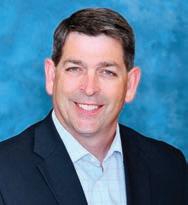
Chairman Bill Bateson (Hancock County)
1. What is something you think all farmers should know about the Ohio Soybean Council/soy checkoff?
a. The amount of effort that is being put forth to add value to our soybean crop. The staff of OSC are very professional and are the ones executing the direction of the OSC board.
2. Why did you decide to get involved in OSC to begin with?
a. A board member asked me to attend a meeting with him and see if OSC would be something I would be interested in.
3. What have you gained or learned by being on the OSC board?
a. That as a producer I can have input in driving usage of our crop. We can be active in development and use of our crop.
4. What OSC projects are you most excited about?
a. Airable Research Lab is new to OSC, we hope that will drive new uses. We are always happy to be involved with OSU.
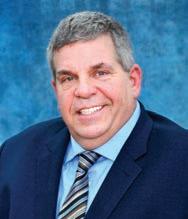
Vice Chairman Jeff Magyar (Ashtabula County)
1. What is something you think all farmers should know about the
Ohio Soybean Council/soy checkoff?
a. Ohio farmers should realize that the checkoff dollars they paid in the past have been invested in projects to increase demand and usage for soybean products and has a significant ROI.
2. Why did you decide to get involved in OSC to begin with?
a. I was asked by the retiring representative for this district to consider joining.
3. What have you gained or learned by being on the OSC board?
a. The projects OSC has done and is currently working on have significantly benefited Ohio soybean farmers. Before joining OSC, I always wondered "why are they taking the checkoff out of my settlement" and now I realize the huge benefit from the investment.
4. What OSC projects are you most excited about?
a. GrowNextGen is a wonderful education project. Internationally marketing is so important because of the current trade situation. Airable Labs I believe will pay huge dividends and new uses for soybean products.
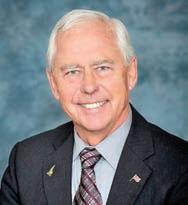
Treasurer Bill Bayliss (Logan County)
1. What is something you think all farmers should know about the Ohio Soybean Council/soy checkoff?
a. Realigning our international sales relationship to depend less on China and more on a broader customer base.
2. Why did you decide to get involved in OSC to begin with?
a. To spend time where my interests were in benefiting our industry.
3. What have you gained or learned by being on the OSC board?
a. The more I am involved, the more
I benefit.
4. What OSC projects are you most excited about?
a. OSC research is is developing many new products & uses. Primarily most anything made from petroleum can be produced from soy oil in a more environmental and sustainable way.
5. Which historical figure would you most like to meet?
a. Harry Truman, "The Buck Stops Here" and make the most of your circumstances.
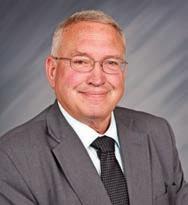
Secretary Dave Dotterer (Wayne County)
1. What is something you think all farmers should know about the Ohio Soybean Council/soy checkoff?
a. How the money is used
2. Why did you decide to get involved in OSC to begin with?
a. Enjoy the challenge of finding new uses and markets for soybeans
3. What have you gained or learned by being on the OSC board?
a. That there are many uses of soy that I never would have dreamed of
4. What OSC projects are you most excited about?
a. Our own research lab
5. Which historical figure would you most like to meet?
a. Abe Lincoln — but not at the theater. u


Dusty Sonnenberg, CCA
There were plenty of challenges for soybeans in 2019 and, fortunately, there are numerous research projects seeking some solutions. In fact, all of the research in this story is funded in some way by the soybean checkoff through the Ohio Soybean Council or the North Central Soybean Research Program.
Research has consistently shown the importance of planting date. In some cases in Ohio in 2019, planting date did not hurt final yields as much as would be expected due to a late frost and consistent moisture. This does not diminish the importance of planting dates for soybeans.
“Planting date is still the number one factor that influences soybean yield,” said Laura Lindsey, Ohio State University Extension soybean specialist. “You don’t want to push it too early, because there can be issues on that end.”
Research has consistently shown a yield reduction from late planting ranging from 0.25 to 1 bushel per acre per day depending on row width, date of planting, and variety. In southern Ohio, soybeans should be planted any time after April 15 when soil conditions are suitable. In northern Ohio, soybean planting can begin the last week of April if soil conditions are suitable. Soybeans should not be planted until soil temperature reaches 50 degrees Fahrenheit and moisture is present at planting depth. Planting too early, or when conditions are not adequate, comes with risks such as damping-off, bean leaf beetle, and late spring frosts.
Another consideration is the seeding rate.
“There was supposed to be a planting date and seeding rate combined study
crops in continuous soybeans and if a grass cover between soybean plantings helps or not,” she said. “So far, the cover crop did have a 5- to 10- bushel per acre positive impact on the soybean yield in 2018. We will see how the 2019 results come in.”

Laura Lindsey

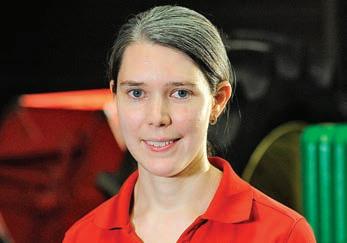
this year, but the wet weather prohibited it from happening, so it has been pushed back until 2020. What the research has shown so far is that for a final stand count in the fall, you want 100,000 plants per acre in May planted soybeans at harvest, so whatever it takes backing it up to planting population and emergence is what is needed,” Lindsey said. “For later planted soybeans, or double-crop beans, that number would be higher.”
Row-width also had an impact in 2019 and will be an important factor to consider in 2020.
“There was a nationwide study on row width. The 15-inch beans outyielded the 30-inch beans. That effect is more when you plant late,” Lindsey said. “We have an on-farm study where we are also looking at different soybean seeding rates, and plant-to-plant spacing as it relates to soybean thinning. Soybean plant-to-plant spacing does affect thinning. Soybeans will naturally thin. The question is how it impacts final yield.”
Research is showing that using cover crops has multiple benefits. in soybean production as well.
“We have a research project looking at cover
There has also been some research looking at different maturities of soybeans.
“We conducted a study in 2017 and 2018 to evaluate soybeans all the way from a Group 0 soybean to a Group 4. The Group 0 beans were short, thin, and spindly; they flower much earlier. One year we evaluated Group 0 to Group 7. The Group 7 beans got really tall and fell over. Anything above a Group 5 was killed off by the frost,” Lindsey said. “I think farmers can plant earlier maturity beans — 2.5 to 2.7 — and still yield similar to a later bean. This can be a great risk management tool if we have falls that continue to be like 2018, later and wet.”
Lindsey recommends that when looking at relative maturities, it is best to compare the maturities within the brand, rather than between brands.
Ohio Field Leader is a checkoff-funded project of the Ohio Soybean Council. For more, visit ohiofieldleader.com. u
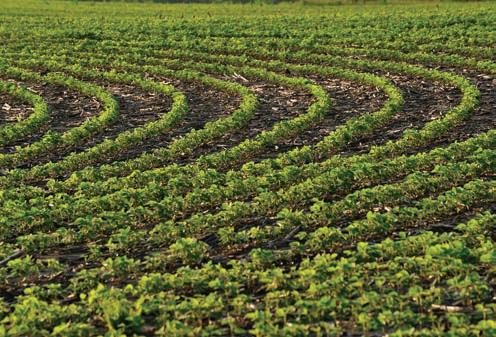







A$3.2 million investment between the United Soybean Board (USB) and the Foundation for Food and Agriculture Research (FFAR) is enhancing the U.S. soy industry’s competitive advantage, driving opportunities for American soybean farmers. is partnership speci cally funds research to improve the protein content and quality of U.S. soybeans while protecting yield.
“Leveraging USB funds in this manner with other public and private collaborators extends the reach and potential impact of USB investments, as well as increases buy-in from key value chain partners,” says USB Vice President of Meal Strategy Keenan McRoberts. “USB will continue to seek and act on opportunities like this to amplify the soy checko ’s investment reach, impact and returns through critical partnerships and leveraged funding sources.”
USB and FFAR are co-funding soybean research to support four projects:
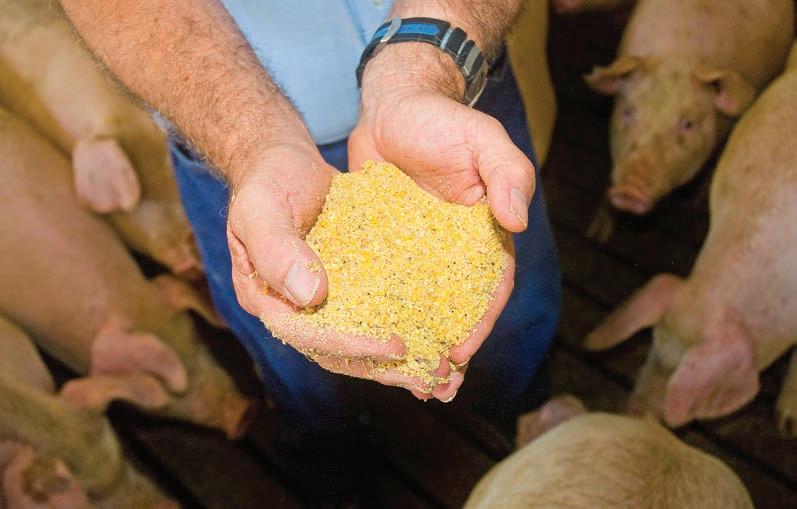
varieties in MG 0 to V. is project received $778,078 from USB and $651,673 from FFAR for a total award of $1,429,751, with funding available through September 2021.
Dr. George Graef, with the University of Nebraska-Lincoln, is leading an interdisciplinary team to improve genetic diversity, seed composition and yield of soybeans using highly productive soybean genetic resources, breeding, genomics, and biotechnology to identify and understand key genes involved in soybean seed protein composition. It also includes developing soybeans capable of producing a 48% protein meal and 11 pounds of oil per bushel, with good amino acid balance and yield that meet or exceed yield of elite
Dr. Rouf Mian, with USDA-North Carolina State University, is utilizing genetically diverse soybeans and wild relatives to develop new germplasm varieties with consistently elevated protein and yields comparable to commercial varieties. e project aims to release at least ve soybean varieties capable of producing more than 48% meal protein and higher yields. e project received $810,114 from USB and $695,020 from FFAR for a total award of $1,505,134, with funding available through September 2020.
Dr. Doug Allen, with USDADonald Danforth Plant Science Center, is identifying the novel amino acid composition genes in the mutant variety and taking advantage of a new analytical method to create a more
nutritious soybean. Soybean meal, considered a gold standard to which most protein sources are compared, contains an inadequate amount of sulfur amino acids. Earlier research uncovered soybeans with enhanced sulfurcontaining amino acids in a mutant variety. USB contributed $96,578 and FFAR invested $80,886 for a total award of $177,464, with funding available through September 2020.
Dr. Yong-Qiang An, with USDADonald Danforth Plant Science Center, is identifying the genes that result in elevated protein and using them in breeding e orts of commercial soybean varieties. e identi cation and validation of these genes has the potential to create both a more nutritious soybean as well as a more pro table one for farmers. e project was awarded $86,468 from USB and $72,421 from FFAR for a total award of $158,889, with funding available through September 2020.
“The protein content in soybeans, on average, is decreasing,” said Sally Rockey, Ph.D., FFAR’s executive director. “By partnering with USB, we are investing in research to increase the protein content of U.S. soybeans. This research not only helps U.S. soybean farmers remain competitive, but also adds additional protein to the food supply.”
“Our goal is to meet the needs of U.S. soy customers around the globe who seek increased protein content and consistent, high-quality soybeans,” says USB Chair and Arkansas farmer Jim Carroll. “We also have a commitment to protect yields, which
supports both environmental and financial sustainability.”
“By partnering with USB, we are investing in research to increase the protein content of U.S. soybeans.”
SALLY ROCKEY, PH.D., FFAR’S EXECUTIVE DIRECTOR
FFAR has invested $1.5 million, and with matching funding from USB, this partnership is contributing more than $3 million to this research.
These projects went through USB’s competitive FY20 funding process.
In addition to identifying ways to improve crude protein content and overall quality of U.S. soybeans, USB also anticipates the findings will help strengthen the U.S. soybean industry’s position in the marketplace, developing and expanding domestic and foreign markets.
McRoberts adds, “Protein is the fundamental building block of our food supply, and a Protein First approach, extending access to plantand animal-based foods with this key macronutrient, is a priority for the U.S. soy community.” u
Elections were held during the December 9th board meeting of the Soy Aquaculture Alliance (SAA) Board of Directors. Serving as Chairman of SAA for 2020 is Jerry Bambauer of New Bremen, OH. Bambauer will begin his first term on the E xecutive Committee for SAA. Set to serve as Vice Chairman is John Wray of Ottawa, K S. New to the E xecutive Committee for 2020 are Keevin
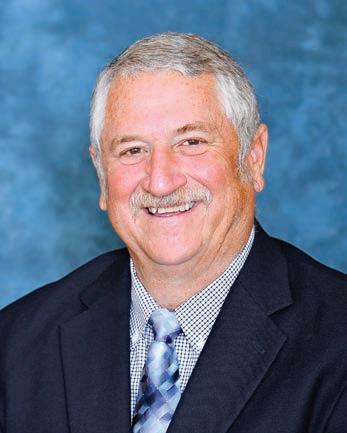
L emenager of Monrovia, IN, and Tom Adam of Harper, IA. L emenager will serve as the Secretary of SAA while Adam will serve as Treasurer.
“I am looking forward to serving in the role of Chairman for SAA. The goal of SAA is to create partnerships that will help the aquaculture industry grow. Representing U.S. soybean farmers as we continue to work to develop innovative uses for soy in the aquaculture industry is important,” said Bambauer. “As a soybean farmer, I am committed to developing diverse markets. We are seeing demands for aquaculture increase globally and this presents a tremendous opportunity for the U.S. farmer,” Bambauer continued.
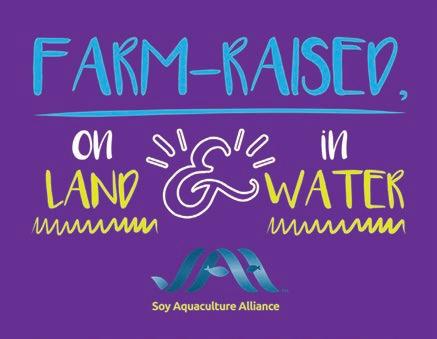
soybeans the most widely trusted and commonly used aquafeed ingredient.
SAA was developed in an effort to supply the highest quality soybeans and soybean ingredients for the aquaculture feed industry. Comprised of both private industry and a number of Qualified State Soybean Boards (QSSBs), SAA is working to make US
“The Soy Aquaculture Alliance represents a number of QSSBs and industry professionals. As we build relationships with aquaculture producers and feed manufacturers and fund research, we are committed to working to build sustainable feed opportunities for the growing aquaculture industry,” Andy Tauer, SAA Executive Director explained.
For more information about the Soy Aquaculture Alliance visit www.soyaquaalliance.com . u



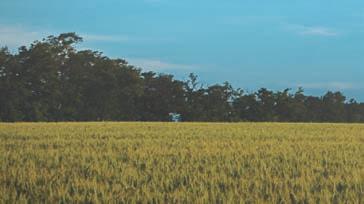
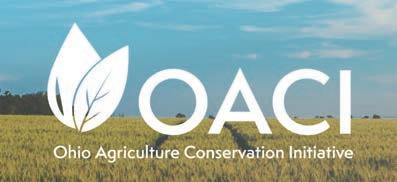

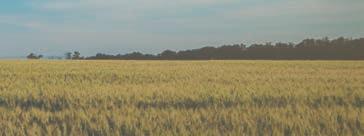

The Ohio Agriculture Conservation Initiative (OACI) is an unprecedented partnership between agriculture, conservation, environmental, and research communities to recognize farmers for their dedication to utilize established methods to improve water quality in Ohio and to increase the number of best management practices being implemented on farms.
The H2Ohio initiative was developed to ensure safe and clean water for all Ohioans. The plan invests in targeted solutions to help farmers implement best management practices on their farms. OACI will work with the H2Ohio program to ensure funds get to farmers who demonstrate a commitment to continuous improvement through the implementation of science-based practices.
By collaboratively learning and sharing information, Ohio’s water quality advocates stand as a united front dedicated to identifying solutions and helping farmers implement them.
OACI partners include a diverse group of organizations:





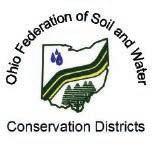
OACI was formed to accomplish two key goals:
» Assess farm practices in Ohio to better understand current on-farm conservation and nutrient management efforts.
» Create a new, voluntary certification program for farmers to promote continuous improvement and increase adoption of best management practices to improve water quality in the Western Lake Erie Basin.












o to io C or an clic on t e ar er rofile utton to input the information below to receive H2Ohio funding for year 1.

ar er rofile ear e uire ent
1.# of total acres farmed, broken down by crop and nutrient source applied
2.Nutrient recommendation source (Retailer, CCA, farmer, etc.)
3.Type of NMP, if any at all
4.Fertilizer license and date, if completed
5.Frozen/Snow covered application and if sensitive areas have been located
6.Manure storage capacity if applicable
7.Current cost share sources (EQIP, CSP, CREP, etc.)
Certification ear re uire ent
1.Soil testing frequency (how often) and intensity (sample area)
2.How was your manure and or fertilizer recommendations determined? (590, DLEP, Tri-state, etc.)
3.How were your manure and or fertilizer applications made per crop? (surface, subsurface, split application, etc.)
4.If your acres were tilled, how were your acres tilled? (Conventional till, strip till, no-till, etc.)
5.What type of cover cropping was done? (winter kill, overwintering)
6.Current adoption of structural practices (DWM structures, grassed waterways, etc.)

For more information, visit OhioACI.org or H2.Ohio.gov



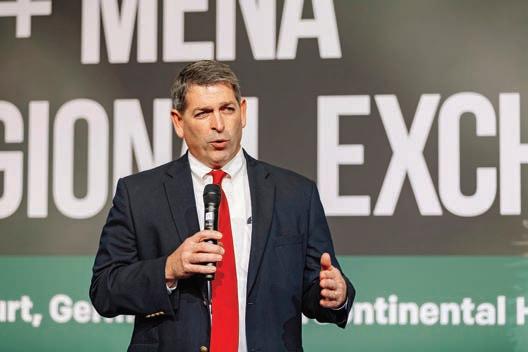
The Ohio Soybean Council (OSC) and the soybean checkoff continue to expand the demand for soybeans in a variety of international markets, by creating a preference with buyers and promoting Ohio’s efficient delivery systems that lead to increased sales of Ohio soybeans and soybean-derived products. As part of that initiative, OSC recently participated and presented in the U.S. Soy Trade Exchange Conference in Frankfurt, Germany, specifically meeting with soybean importers from Europe and the Middle East/North Africa regions.
Three soybean farmers including Bill Bateson (Hancock County), Bill Bayliss (Logan County) and Jeff Magyar (Ashtabula County) represented Ohio’s state soybean board by attending and presenting during the conference about soybean production and quality in Ohio. The conference, hosted by the U.S. Soybean Export Council, celebrated the 50-year relationship between Greater Europe and the U.S. as well as U.S. Soy activities in the Middle East and North Africa.
More than 300 attendees, including importers, exporters, soybean farmers,
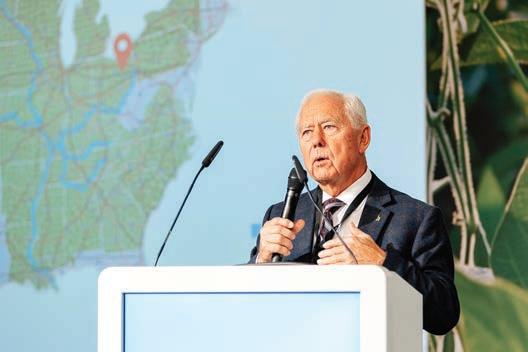
innovators, and leaders from the U.S., were represented at the event. Grower leaders and representatives from five Qualified State Soybean Boards (Kansas, Michigan, North Carolina, Ohio, South Dakota) also participated in the conference.
Throughout the two-day conference, there were productive discussions regarding agricultural trade, sustainability, market segmentation, innovation, and more. USDA FAS Administrator Ken Isley also attended and spoke with attendees about U.S. agricultural exports and trade.
Farmers, exporters, and importers from the EU/MENA were able to discuss current and future investments. U.S. Soy exporters from Cargill, Perdue Agribusiness, Consolidated Grain and Barge (CGB), Scoular, and Bunge even led a panel discussion discussing the industry. Another highlight of the event was when all the attending U.S. soybean farmers gave a U.S. Soybean Crop update where they introduced themselves and talked about their farms and families.
Soybean buyers had numerous opportunities to interact with the farmer leaders who attended the regional
event. When it came to talking about U.S. Soy’s sustainability, the farmers’ explanations about what they do and how they practice various methods at their farms to make their production more environmentally friendly and more sustainable offered an important human perspective to the professional presentations on the subject.
“The conference provided our soybean importers up-to-date crop quality and market information, latest developments and technology and most importantly recognized our long-standing industry partnerships,” said Bill Bateson, who also serves as OSC’s chairman.
Events like these are vital to increasing the demand for Ohio and U.S. soybeans. It’s beneficial for crushers and importers to meet soybean farmers and put faces of the growers to the product.
The EU/MENA regions are significant for Ohio and U.S. soybean farmers, and this conference offered OSC opportunities to build relationships further and advance growth.
“OSC is proud of the progress we were able to make at this year’s event,” added Bateson. u


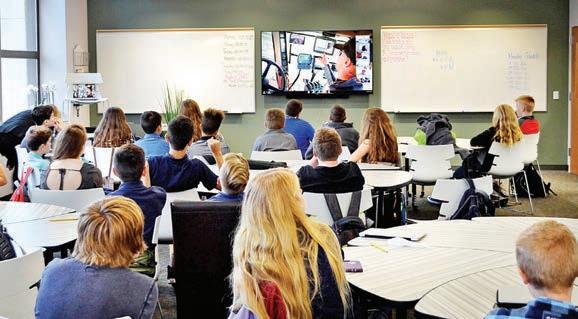
For the third year in a row, Ohio soybean farmers will welcome students into their fields, equipment and barns through a series of five Live Virtual Field Trips in 2020.
Approximately 4,000 students have ridden along with farmers since 2018 as they planted, managed and harvested their crops, and worked to improve water quality on their farms. It’s all been done from the comfort of the classrooms through internetconnected computers.
The Ohio Soybean Council’s Virtual Field Trip to an Ohio Soybean Farm (VFT) program uses live video conferencing to connect students of all ages in real-time with farmers via smartphones and tablets on their farms. By eliminating the need for busing and logistics, soybean farming has become more accessible to students across the state.
“VFTs continue to exceed expectations and help us reach a high number of classrooms in a cost-effective manner,” said Tom Fontana, OSC’s director of research and education, meaning the program is an effective use of checkoff dollars. “For many students and teachers alike, this is as close as they’ll ever get to stepping foot on a soybean farm or riding in equipment.”
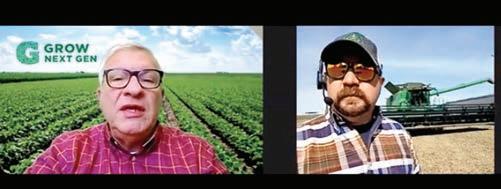
In addition to learning about planting and harvesting, the lifecycle of a crop, diverse uses of soybeans and their importance to our economy, students will gain an understanding of how farmers use technology such as GPS, temperature and moisture sensors, drones and more to enhance crop management. A live question and answer session accompanies each trip so that students can have their questions answered directly by a farmer.
Trip recordings are available to those unable to participate live, meaning these trips have the capacity to have an even further reach. In fact, more than 25,000 students have viewed recordings of past VFTs since the program’s inception.
This year, in addition to the annual spring planting and fall harvest trips for all ages, a new trip will be incorporated for middle and high school students focusing solely on soy bioproducts.
“Teachers have shared their students want to learn more about what happens to soybeans after they leave the farm, and what soy-based products are used in their everyday lives,” Fontana said. “Our new trip will focus on educating students about another important aspect of checkoff investment: soy-based product research. The trip will
provide hands-on exploration of soy products while showcasing ongoing research to provide even more uses for soybeans.”
Wood County farmer Nathan Eckel, Ross County farmer Scott Metzger and Hancock County farmer Anthony Stateler continued their roles as host farmers for the program in 2019.
“The VFT program has really changed the game for how we advocate and educate on behalf of our industry,” said Eckel. “Giving so many students and teachers the opportunity to see what we do, and have their questions answered by a farmer instead of the internet is a very rewarding and positive experience.”
The VFT program is part of a larger effort to educate both teachers and students about modern agriculture. Ohio Soybean Council’s education website, GrowNextGen.org , has classroom curriculum, e-learning courses and career videos — all designed to educate the next generation of consumers and generate interest in agriculture careers.
According to Fontana, additional farmers may be considered for the 2020 trips.
For more information, to see current trip dates and register for a Virtual Field Trip to an Ohio Soybean Farm, visit GrowNextGen.org/ virtual-field-trips or contact Tom Fontana at tfontana@soyohio.org . u










“THE CHECKOFF HAS BEEN A HELP TO US. IT'S OPENED FOREIGN MARKETS AND FUNDED RESEARCH ON DISEASES AND FUNGI. THE RESEARCH AND DEVELOPMENT HAS JUST BEEN VERY POSITIVE.”
-JAN LAYMAN, KENTON, OHIO













BY INVESTING IN THE SOYBEAN CHECKOFF, FARMERS ENSURE END-USER DEMANDS ARE MET WHILE RAISING SOYBEANS PROFITABLY. USING INFORMATION FROM THE OHIO SOYBEAN COUNCIL, FARMERS TRACK RESEARCH ON NEW VARIETIES, NEW USES AND NEW FOREIGN MARKETS TO GROW NEW OPPORTUNITIES.
LEARN MORE AT SOYOHIO.ORG/HEREWEGROW.